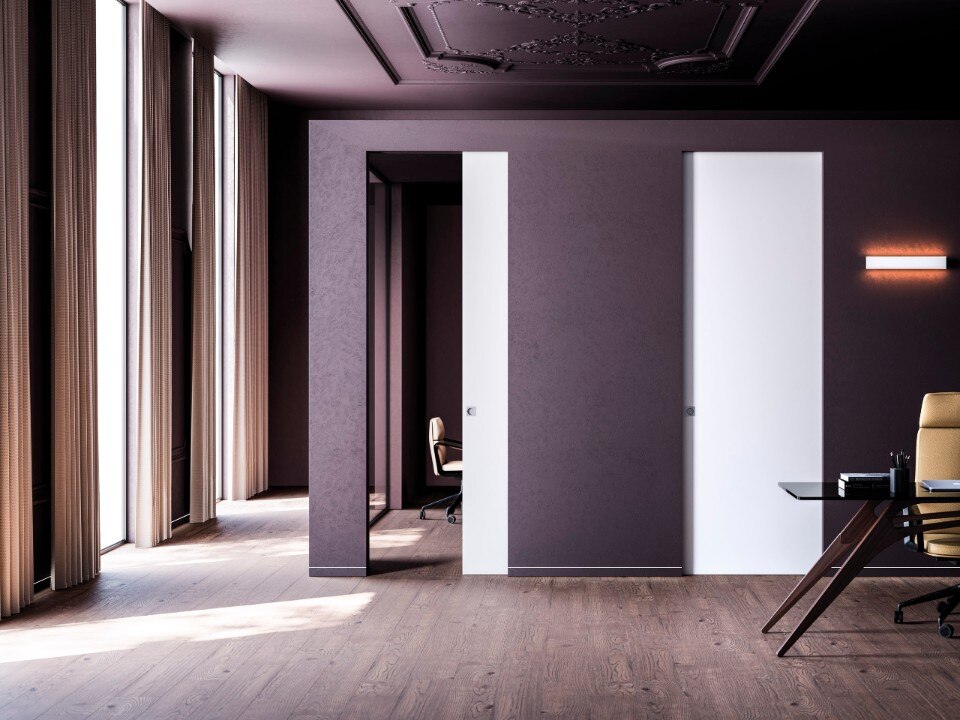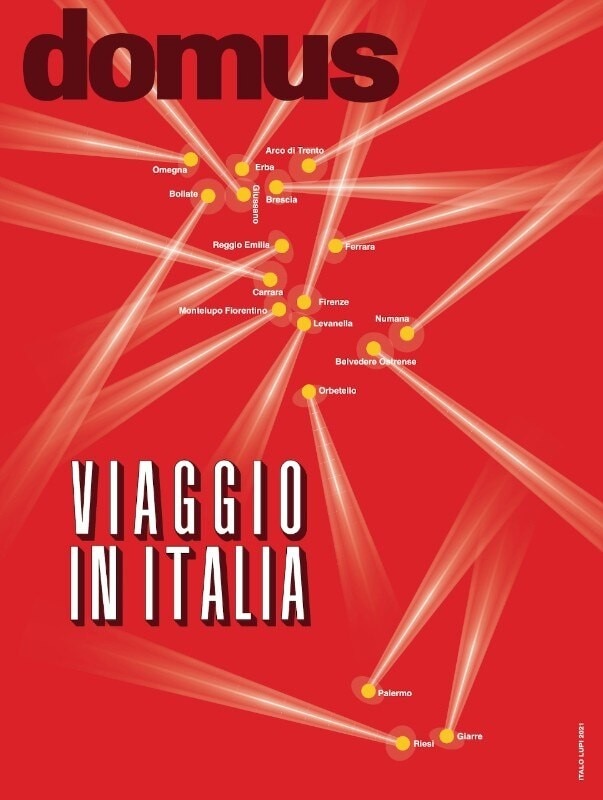The journey of Domus through Italy continues, the fourth stage of the dialogue on the peninsula with which the magazine has decided to symbolically close the year, a final issue that acts as a semantic watershed between the two Guest Editors. Domus 1063 opens with a Foreword by Editorial Director Walter Mariotti, for whom the projects presented in the issue do not correspond only to a public or private vision, but represent “the evolution of the genius loco”, and in particular of the deep feeling of post-lockdown Italy.
The Editorial by historian Fulvio Irace, at the helm of the issue, thus presents an issue dedicated to collecting a series of exemplary proposals for urban and territorial regeneration, demonstrating that it is always the bet of utopia that guides the winning choices: “new models to interpret and govern metamorphosis”.
The Photo Essay section continues with a synthetic overview of some of the most interesting authors of Italian photography, who have placed the anthropized landscape at the center of their narrative. The works investigate the possibilities that photography can become a tool for exploring the environment, the vulnerability of the contemporary city and the future of a fiercely anthropized nature.
Following, the New Landscapes pages present six effective examples of visionary design. Here we find the restoration of Palazzo Butera in Palermo, the transformation of a historic building into a laboratory for local and European identity, and the Civico Civico by Orizzontale and Flora La Sita, the redevelopment of a property confiscated from the Mafia. These are followed by the two buildings designed for Noivoiloro by Ifdesign, and the new Prada logistics hub by Canali Associati, a space where artifice and nature meet for the benefit of workers. With the Church of San Giacomo Apostolo in Ferrara, the Miralles Tagliabue EMBT studio celebrates the renewal of the religious community, while the Restorative Open-Air Gym in Bollate shows itself as a collaborative project to improve the livability of penitentiary spaces. Finally, the Palazzo dei Musei in Reggio Emilia is a civic museum designed by Studio Italo Rota, which is grafted into a historic building, telling the story of the territory as it passes through the ages.
Next is Art in Public, with works by Peter Halley, Francesco Vezzoli and Hypermaremma: art comes out of the institutional enclosures of museums to break into public spaces and into people’s everyday lives. A second Photo Essay photographs the world of work, recounting how “industrial photography” has evolved into the language of photo-journalism.
In the Company Museums section, Antonio Calabrò writes about how corporate museums are a key to reading the past and future of corporate culture. The three examples told - Museo Alessi in Verbania, Molteni Museum Giussano in Milan and the archives Museum Bitossi Montelupo Fiorentino in Florence - would thus be the testimony of a real “industrial humanism”. We continue with the section Manifacturing Landscapes, and Francesca Molteni writes about how territories, communities and places of production are called to a profound metamorphosis. Never as today, the territory is, for industry, a resource to draw on, towards greater sustainability, attention to production processes and the impact on human capital, the landscape and the fragile planet that welcomes us. Looking again at the Italian business geographies, new models emerge.
We close the issue with Cover Stories, where the architect and illustrator Italo Lupi tells us how the design for the cover of this issue of Domus, was almost metaphorically born at the same time as the great attention he dedicated to rearranging other trips to Italy: that is, the great exhibition on the great Saul Steinberg who, having escaped from prison and pursued the racial laws, landed in New York, spending the period of the Second World War there, and then returning to Italy following more or less adventurous journeys.

In this month’s Diario, pages dedicated to current events, a Round Table between Andi Nganso, doctor, Matteo Moretti, teacher and designer, the urban planner Rahel Sereke and the councillor Francesca Bottalico discusses how to rethink places and services to accompany migrations: is beauty a central element in the emergency project? For Other voices Stefano Maffei writes about how we need to start looking systematically at the possibility of transformation offered by the six principles of jugaad: frugality, flexibility, simplification, intuition, opportunity in adversity and inclusion of marginality. For Companies, we tell the double life of the glorious lighting company Stilnovo: born in Milan in 1946 and reborn in Trento in 2019, acquired by Linea Light Group. For Processes, we present the integral project of Francesco Faccin, who opens in Milan the first Nudo, a proximity food store and meeting space devoted to sustainability. The editorial director Walter Mariotti concludes the section with Coffee break, a chat with Philippe Starck. The French designer talks about his project for Amor in Farm, the new Alajmo Group restaurant inside the campus of H-Farm, the innovation and training center founded by Riccardo Donadon in Roncade, in the province of Treviso.

In addition, with this month’s issue you will find attached a monograph dedicated to Jean Nouvel, Domus’ new 2021 Guest Editor. We open the attachment with the section Opinions, in which the Pritzker Prize-winning architect is celebrated in the words of important architects and others, including Adel Abdessemed, Marie-Claude Beaud, Hervé Chandès, Gustavo Dudamel and Alain Fleischer.
This is followed by Walter Mariotti’s Interview, where Jean Nouvel talks about his idea of architecture: “a unique human act”, “the answer to concrete social and individual questions”, “a means of democratization”. Then, we recount some of the most notable buildings designed by Domus’ new guest editor from 2018 to the present: Henderson Cifi Tiandi, Shanghai; Stelios Ioannou Learning Research Center, Nicosia; Ycone La Confluence, Lyon; Dolce&Gabbana Showroom, Seoul; Museum of Art Pudong, Shanghai. Chantal Hamaide retrospectively looks back over 30 years of the French architect’s work in the world of design.
With Paris, je t’aime, the French architect recounts his passionate relationship with the capital, from his university years to the battles of the 1970s to protect the city from speculation. To conclude, Salvator-John A. Liotta traces an Emotional Geography of the places that have shaped the new Guest Editor, reflecting his passion for the cities he has discovered over time while creating his own works.
In addition, this month as an attachment there will be the third issue of Domus Air, the magazine’s special issue dedicated to infrastructure, including new architectural projects, technological innovations and reconversions in a sustainable key.

Eclisse: when invisibility art shakes up interior design
A leader in manufacturing pocket door frame systems, Eclisse redefines the concept of living space. Through solutions like Syntesis Line, the company transforms doors into continuous design elements.







































